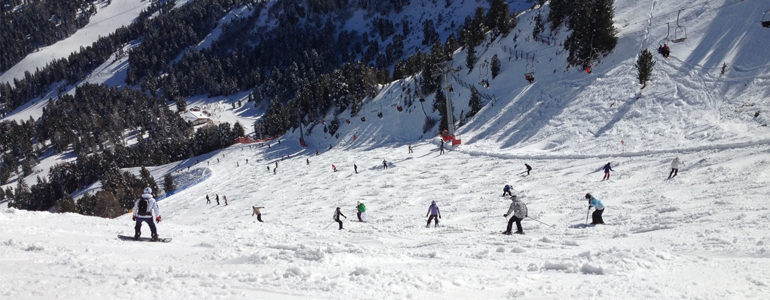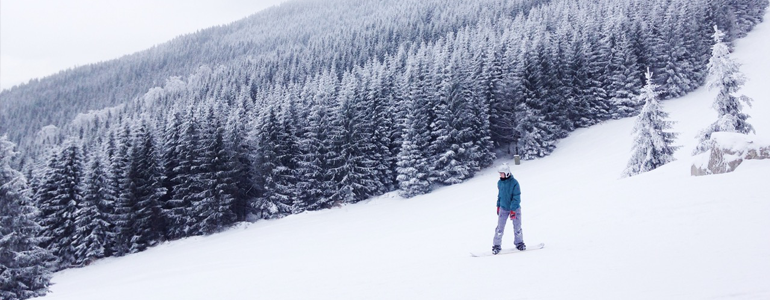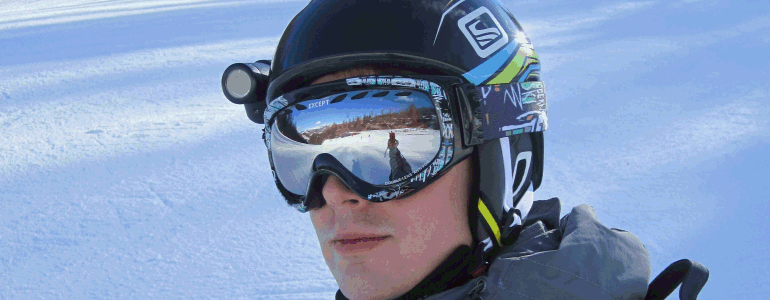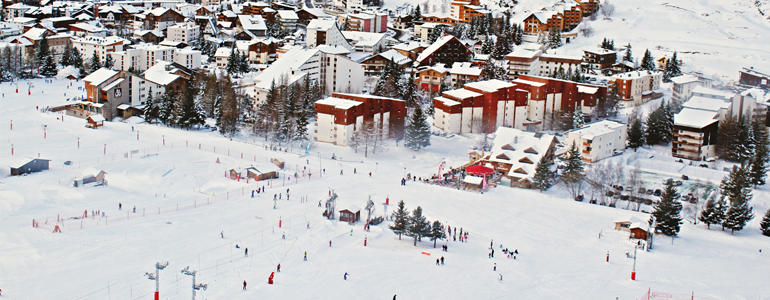
December 2016
Off to hit the slopes? Ensure that you know what to do in the event of a skiing accident, with our top tips.
Approach the Scene Safely
Although your first instinct will be to help the injured person, it is important to ensure that the scene is safe for you to approach. The accident could have happened in a main section of the piste, so it is important that you are alert of any other skiers in the surrounding area. Stopping in the middle of the piste could result in further casualties.
Think About your Actions
If the casualty is in a busy section of the piste, you may want to move them to the side, out of further harms way. If you are looking at doing so, it is extremely important that you assess the extent of their injuries. Ask yourself the question: Could moving them cause them more pain, or make the injuries worse?

Can They Respond?
Can the injured person talk? Often, whether or not the casualty can fully respond can determine if they are in a serious state. Ask them their name, age, and how the accident happened, where they are in the most pain, and whether they think they will be able to be moved etc.
If the person is in a responsive state, be sure to keep them talking. You want to keep them awake, and reassured. It is important to comfort them as they may be distressed - tell them that help is coming, and that they won’t be in that situation for too much longer.
Check their Pulse and Breathing Pattern
One of the most important things to do in a serious accident is to check the pulse and breathing pattern of the casualty. Can you feel a prominent pulse, or is it very faint? Are they struggling to breath, panting, or coughing?
In order to check if someone is breathing, there are three checks that the NHS advise:
If you believe that the casualty is breathing regularly, you should place them into the recovery position.
If you believe that the injured person is not breathing regularly, you should begin CPR (cardiopulmonary resuscitation).

Address Open Wounds
If the injured person is bleeding, you will need to apply pressure to the wounded area. It is important that the pressure applied should be done with a clean piece of fabric or tissue, so that it does not result in an infection. Applying pressure allows the blood to clot, slowly decreasing the bleeding.
Alert Others
Be sure to alert other skiers of the incident. They need to be aware of the casualty scene, so that they can ski around it, and not cause any further injuries. One way of making others alert, is placing a set of skis in a cross format, or a snowboard, in the snow around 5 meters before the scene of the accident. This will alert fellow skiers, and make them aware that there is an accident ahead. Crossed skis or a snowboard ahead of the incident, is a recognised symbol to fellow skiers. Not alerting others could result in further casualties.
Removing Ski Equipment
Although you will naturally want to make the patient as comfortable as possible, it is important NOT to remove the casualty's ski equipment, if you believe that it could worsen their injuries. If they have damage to their head, neck, back or shoulders, it is most likely that pain will be caused if the helmet were to be removed. If the casualty has damage to their legs or back, then it is important not to remove their skis or snowboard.

Call for Help
Call for help. Emergency numbers can be found on most piste maps. If the accident is not near the bottom of the mountain, or you do not have a mobile phone on your possession, or you do not know the emergency assistance number, it is important to stay calm, and not to panic. Panicking could upset the injured skier, and make them uncomfortable. If you are alone, attempt to flag down another skier to get help. Try not to leave the casualty on their own if possible.
Keep them warm and Comfortable
It is important to keep the casualty as warm, and as comfortable a possible in such conditions. Keeping them warm is vital, as lying in the snow will bring their body temperature down drastically.
Although your instinct may tell you to give the casualty a drink, this can often do more harm than good. Drink, especially alcohol, can often increase the chances of the casualty becoming hypothermic. Once the medical team have arrived, the injured person may need an anaesthetic, so it is good that they have an empty stomach for this, as food and drink can often affect how the medication works.
Travel Insurance
Obviously, we are a bit biased when it comes to this point, but having travel insurance is a very important part in any trip away. It is crucial that you purchase your travel insurance through a reputable company, as it could be very expensive if something were to go wrong. Direct Travel provide different levels of travel insurance cover to suit your needs, as well as additional winter sports cover, covering you for more than 30 winter sports. As well as winter sports, we can also cover you for lost, stolen or damaged equipment, and off-piste skiing and snowboarding. Ensure that you check your policy wording before you travel, in order to be clear on what activities you are, and are not covered for.

Don’t forget, you can get your travel insurance from DirectTravel at either www.direct-travel.co.uk or ring our friendly team on 0330 880 3600.